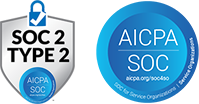What Is Gamification?
Gamification is the use of game mechanics—think points, levels, badges, leaderboards, quests—inside non-game contexts to motivate specific behaviors. In HR and People Analytics, it means wrapping learning, adoption, or performance tasks in playful structures that reward progress, give instant feedback, and spark healthy competition or collaboration.
Why Gamification Matters
Traditional training and HR processes often feel mandatory and dry. Gamification turns “have to” into “want to” by tapping intrinsic motivators (mastery, autonomy, social status) and extrinsic ones (rewards, public recognition). When executed with data, it increases completion rates, skill retention, and platform adoption—while giving HR real-time insight into who’s participating, stuck, or excelling.
Where Gamification Is Used
- Learning & Development: Micro-courses award badges; streaks encourage daily skill practice.
- Onboarding: New hires “level up” as they finish paperwork, meet teammates, and pass product quizzes.
- Wellness & Safety Programs: Steps challenges, safety-bingo, or quiz quests drive healthy and compliant habits.
- Sales & Service Desks: Leaderboards track tickets resolved or demos booked, celebrating peer wins.
- Change Management: Rollouts of new HRIS/ESS tools use quests and rewards to drive first-time and repeat usage.
Gamification Key Benefits
- Higher Engagement: Interactive mechanics lift participation and completion rates versus static modules.
- Faster Skill Adoption: Immediate feedback loops reinforce learning and shorten time to proficiency.
- Behavioral Data: Every click, badge, and challenge completion feeds People Analytics for precise ROI tracking.
- Cultural Energy: Friendly competition and shared achievements build community and momentum.
- Scalable Personalization: Dynamic challenges adapt difficulty to role, tenure, or skill gaps.
Best Practices & Examples
- Start With Behavior, Not Badges: Define the exact actions you need (finish compliance training, use ESS weekly) before picking mechanics.
- Balance Competition & Collaboration: Offer team quests and personal progress bars so introverts and extroverts both thrive.
- Keep Feedback Immediate: Dashboards, progress bars, and celebratory micro-animations reinforce actions instantly.
- Iterate With Data: Use analytics to drop unused mechanics, tune difficulty, and spotlight what actually drives outcomes.
- Example: A healthcare network gamified mandatory HIPAA refreshers—shifting from a 45-minute video to 10 micro-quizzes with badges. Completion hit 98% in two weeks, and error rates fell 15% the next quarter.
Conclusion
Gamification isn’t adding glitter to boring processes; it’s a structured way to design motivation. By pairing clear behavioral goals with smart mechanics—and measuring everything through People Analytics—organizations transform training, adoption, and performance into experiences people enjoy and repeat. Done thoughtfully, it elevates engagement without trivializing the work.
Gamification FAQs
Q: What is gamification and an example?
Gamification uses game elements—points, badges, leaderboards—in non-game tasks. Example: a sales team earns points for demos booked and unlocks badges at milestones, turning routine outreach into a motivating challenge.
Q: What is the concept of gamification?
The concept is behavior design: applying game mechanics to influence motivation and participation. It leverages feedback, progress, and rewards to make tasks engaging and to reinforce desired actions.
Q: What is gamification in HR?
In HR, gamification boosts engagement in learning, onboarding, wellness, and performance programs. Employees earn badges for course completion, see leaderboards for challenges, and receive instant feedback tied to HR goals.
Q: What is gamification in marketing?
Marketing uses gamification to drive customer actions—spin-the-wheel discounts, loyalty tiers, or challenge-based rewards—collecting data and increasing interaction, referrals, and brand stickiness.




